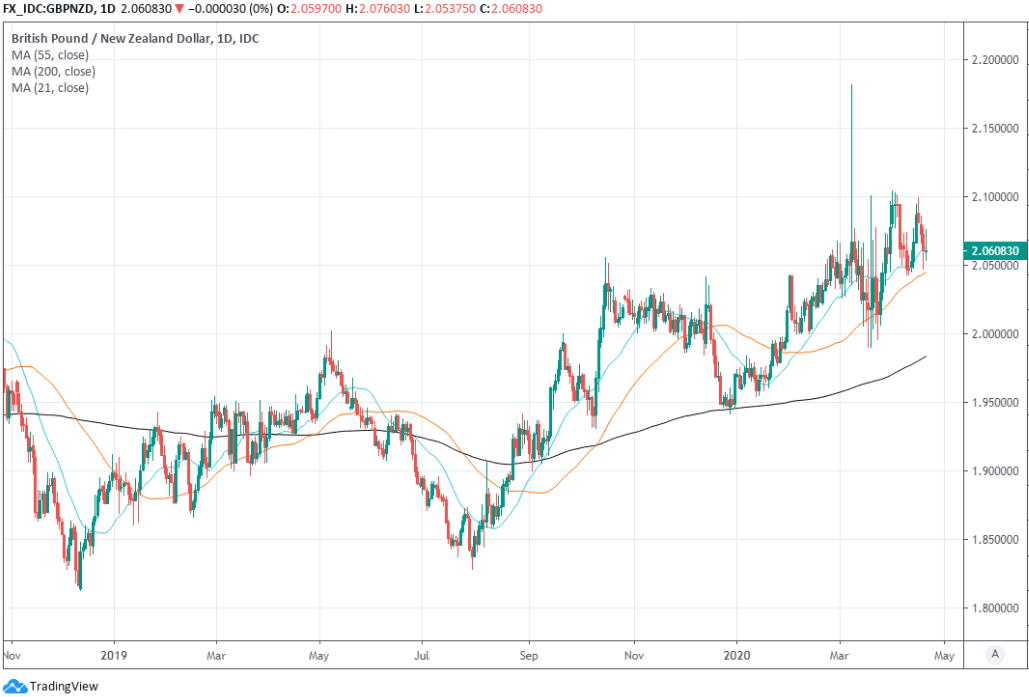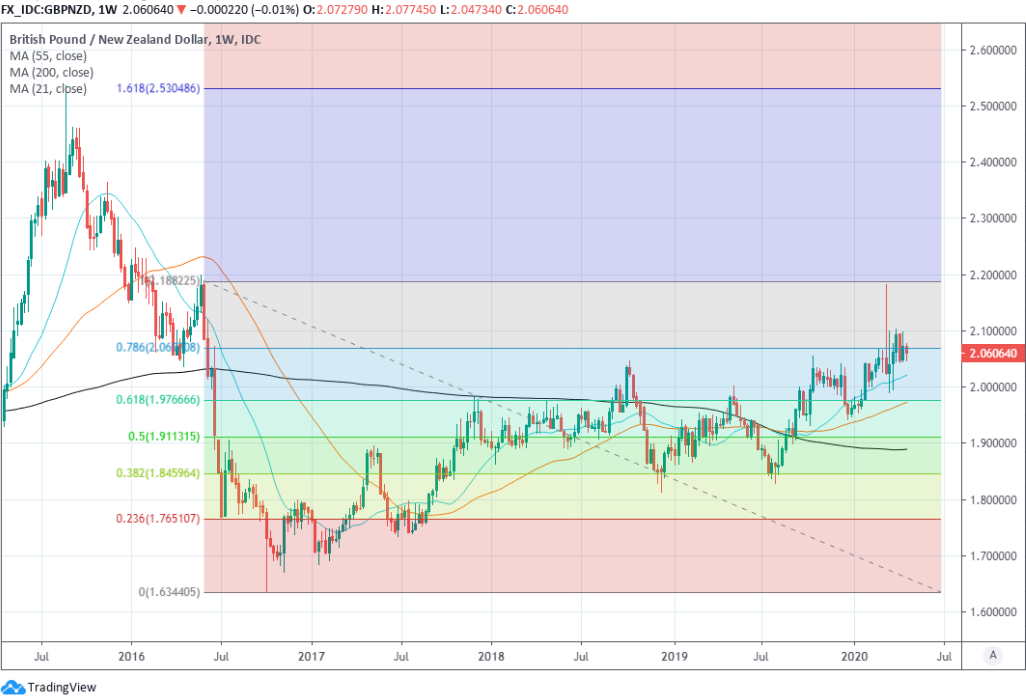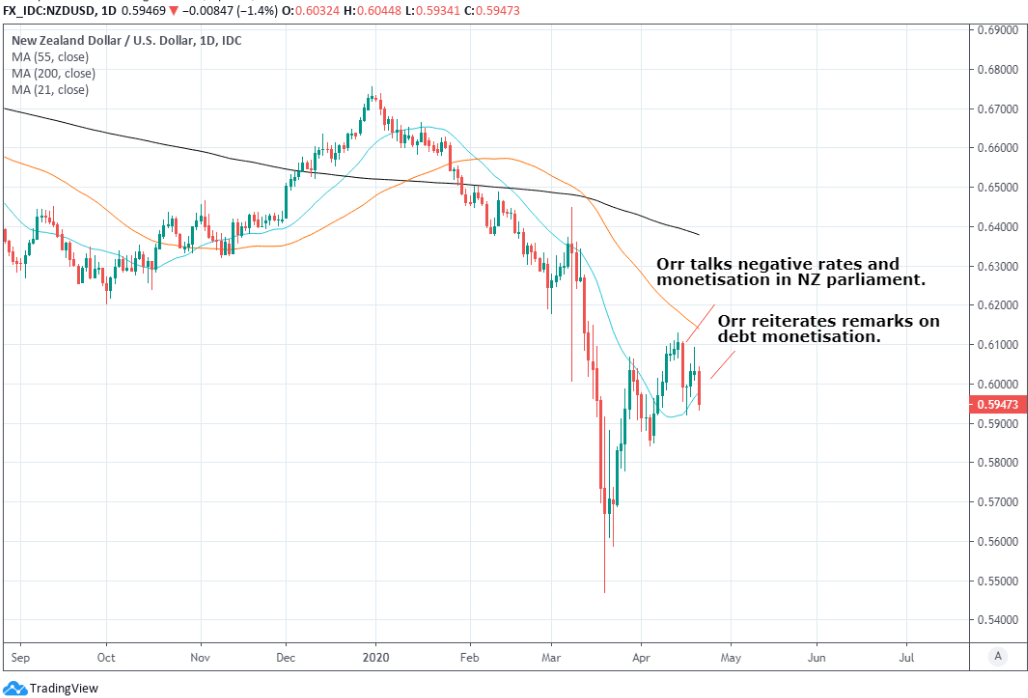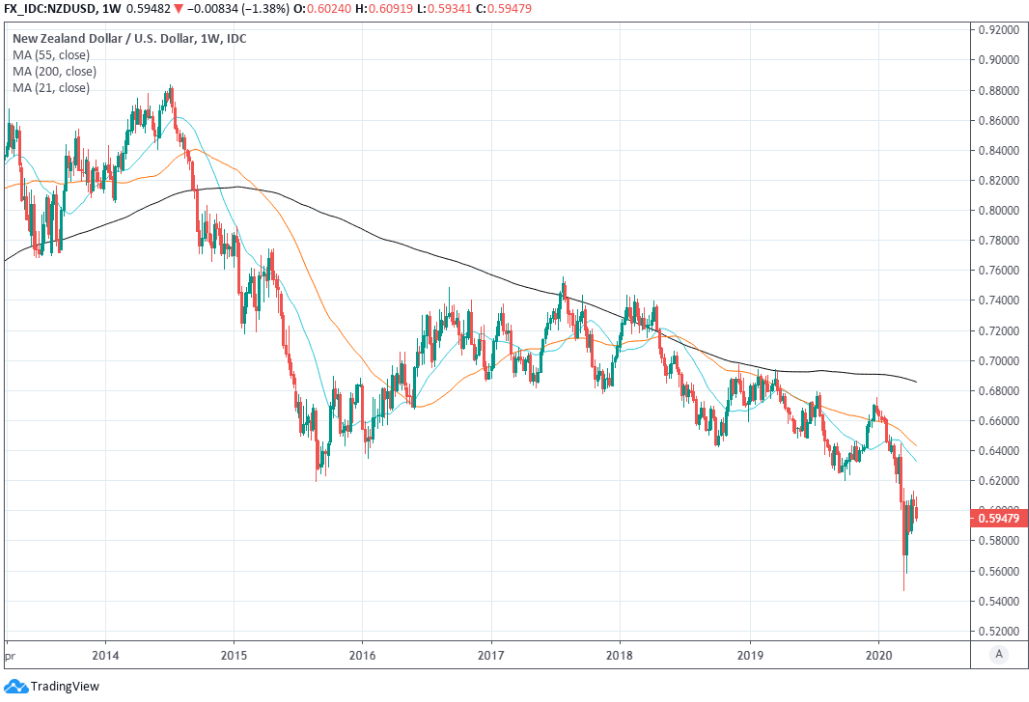Pound-New Zealand Dollar Rate May Already Be Past Its Best If RBNZ Can't Keep a Lid on the NZD
- Written by: James Skinner
-
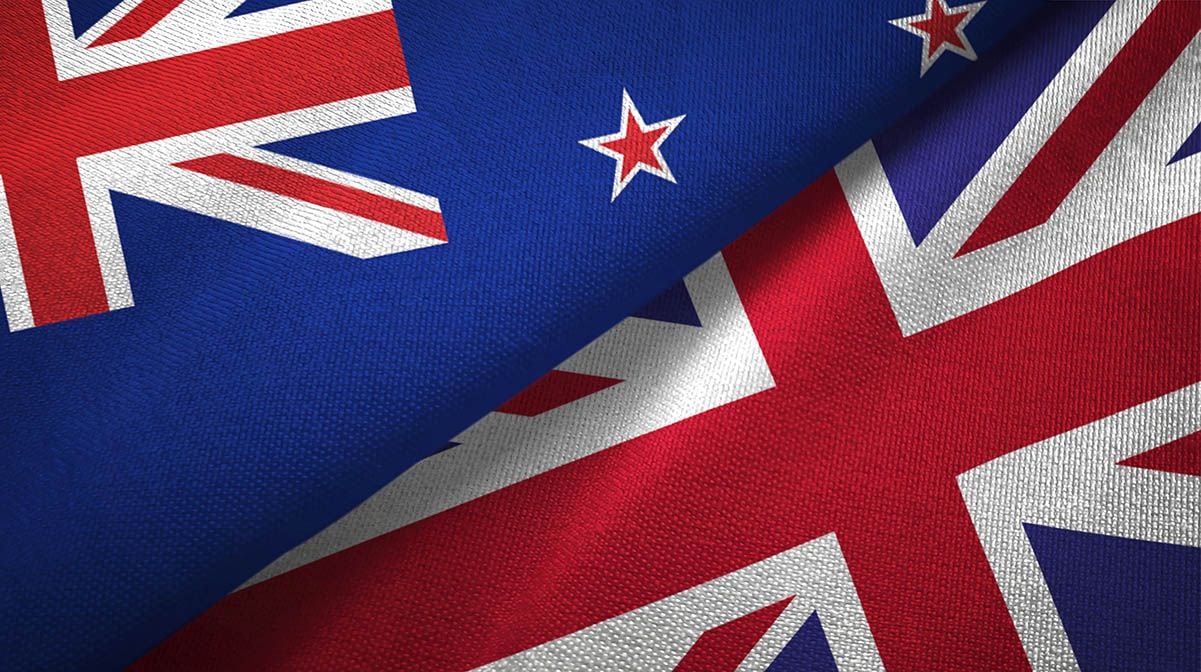
Image © Adobe Stock
- GBP/NZD spot at time of writing: 2.0662
- Bank transfer rates (indicative): 1.9950-2.0095
- FX specialist rates (indicative): 2.0364-2.0488 >> Get your quote now
The Pound-New Zealand Dollar rate edged higher on Tuesday but it's carrying a loss for the week-to-date and may already have seen its best levels for some time to come if the Reserve Bank of New Zealand (RBNZ) is right in its possible expectation for a bout of Kiwi Dollar strength ahead.
New Zealand's Dollar fell to the bottom of the major currency barrel on Tuesday, enabling the Pound-New Zealand Dollar rate to win back ground lost in the opening session of the week after RBNZ Governor Adrian Orr repeated earlier controversial remarks including the claim that the bank is "open minded on direct monetisation of government debt" as a means of combatting the coronavirus-induced downturn in the economy.
But the Kiwi was previously April's second best performing currency and if Orr's remarks turn out to be little more than an attempt to combat that strength, rather than being indicative of a policy change in the pipeline, then this month's rally might resume soon and that could spell curtains for the Pound-to-Kiwi uptrend. Especially if the Kiwi rally picks back up just as dire projections for the GBP/USD rate are playing out, given the Pound-to-Kiwi rate always closely matches the sum of GBP/USD over NZD/USD.
The Pound is increasingly tipped for losses against the U.S. Dollar which, if playing out alongside a rising NZD/USD rate, would not only halt the uptrend in the Pound-to-Kiwi rate but could also elicit a sizeable fall. For illustrative purposes a GBP/USD rate that falls in line with analyst expectations to 1.15 while NZD/USD continues around 0.60, would put the Pound-to-Kiwi rate down at 1.9166 from 2.0662 on Tuesday. This means RBNZ Governor Adrian Orr's latest remarks are significant to the outlook for Sterling.
"I do not recall a serving head of a central bank making such a comment," says Joseph Capurso, a strategist at Commonwealth Bank of Australia.
Above: Pound-New Zealand Dollar rate shown at daily intervals.
Governor Orr was reported by Bloomberg News to have attempted to play down the controversy associated with a central bank financing its government through newly created money in remarks that also took a more laid back, although still-unenthusiastic approach to the concept of negative interest rates as a crisis-fighting tool. The comments were similar to those made last Thursday in an appearance before the NZ parliament's Epidemic Response Committee.
Orr's comments represent an about-turn from the RBNZ's early April position of contentedness with its current policy stance and are controversial because like with most things, currencies and bond prices are highly averse to anything that could debase their value, which a printing-press-driven increase in supply would. Put differently the printing of money to finance government spending is normally the preserve of banana republics not major central banks, even though some of the latter are actually doing it.
"The RBNZ’s increasingly dovish comments stand in contrast to recent RBA policy action. It has already helped the AUD/NZD rate rebound sharply," says Lee Hardman, a currency analyst at MUFG.
The remarks are also curious too because if there are any developed world central banks which are hardly likely to be compelled to resort to 'monetisation' then the RBNZ is one of them. The Kiwi government has a debt-to-gdp ratio of less than 20%, a budget surplus and one of the world's lesser coronavirus epidemics on its hands. New Zealand's fortune is also closely intertwined with that of China, which is long over the worst of its own coronavirus problem.
Above: GBP/NZD rate at weekly intervals. Rejected in Jan by 100% Fibonacci retracement of Brexit downtrend.
It's far from obvious that the RBNZ is likely to need to provide any kind of financing to the NZ government in order to see the country and economy through its own coronavirus shutdown and even if such a need did arise, there are some ways to communicate it to the market and lots of ways not to.
"NZD/USD falls 1.3% after the RBNZ announced that it was open to the direct monetization of debt. Recall it will purchase as much as NZD$30bln in the coming year (compared to government's NZD15bln net issuance)," says Bipan Rai, North American head of FX strategy at CIBC Capital Markets.
Spoken in the 'Queen's English' and a manner befitting of a major economy central banker, communication of such a policy bent might typically involve talk of bank facilities that carry obscure names, with the use of them preceded by words like "this will provide a short-term source of additional liquidity to the government to smooth its cashflows and support the orderly functioning of markets," as was the case with the Bank of England recently.
This might necessarily be preceded or followed by at least a frowning assessment of the practice colloquially referred to as monetisation, like when the BoE told the FT all about how it is not doing monetisation before going on to claim its insitutional framework would prevent it. The BoE said those things days before it and HM Treasury announced they'd "agreed to extend temporarily the use of the government's long-established Ways & Means Facility".
Above: NZD/USD rate shown at daily intervals.
No central banker giving serious thought to firing up the printing presses has ever in this era made a statement - that was intended for broadcast - so ballsy as ;“Direct monetization, I know, has been heresy, taboo for a long time, but it’s only a long time in our lifetime,” which begs the question of why Orr did.
"The RBNZ had been on the dovish end of the spectrum prior to COVID-19, but now it appears likely to be on the hawkish end of the spectrum post-Corona. That brings us to New Zealand's continued relative success in fighting the SARS-CoV2 virus. Where the US is up to 123 deaths per million of population and Canada is up to 42, New Zealand is still at just 2," says Stephen Gallo, European head of FX strategy at BMO Capital Markets.
The Kiwi has the highest sensitivity to investor risk appetite of the major currencies and has long been the group's high-yield play, much to the consternation of the RBNZ, and has remained so even through the coronavirus crisis that's seen the cash rate cut to a new record low of 0.25% so that it's on a par with rates in Australia, the UK, Canada, the U.S. et al.
Kiwi 2 and 10-year bonds still offered higher yields than all their 'G10' counterparts this Tuesday, despite the RBNZ's rate cuts and quantitative easing, while the New Zealand Dollar did handsomely on Monday after official figures showed the RBNZ attaining the midpoint of its 1%-to-3% inflation target for the first time in years. The risk-sensitive New Zealand Dollar rose against the U.S. Dollar on Monday in a session where stock markets and other risk assets were in retreat amid a crash in oil prices.
Above: NZD/USD rate shown at weekly intervals. Down 38.2% from June 2014 peak and -27% since July 2017.
"The kiwi dollar has been the 2nd best performing G10 currency this month," Gallo says. "The last issue buoying NZD is the further decline in crude oil prices. NZ is reliant on oil imports, so the ongoing price weakness benefits it terms of trade and current account. We don't think any of these 3 issues is fully in the price; we would not be surprised to see NZD rally to 0.62 this week."
The U.S. Dollar was higher against almost all currencies as risk aversion returned to markets, although not the Kiwi, which continued its strong April performance off the back of the first-quarter inflation figures released on Sunday night. This more than anything else could explain the apparent dovish turn in RBNZ rhetoric over the last week and the ballsy remarks reported on Tuesday.
The RBNZ has a long history of gatecrashing New Zealand Dollar parties by saying words the Kiwi doesn't like, and the currency was outperforming many rivals up until last Thursday when Orr renewed talk of negative rates and monetisation before the Epidemic Response Committeee. Rising exchange rates would reduce import costs as well as the inflation rate that's only just risen above the midpoint of the target band after many years of being stuck below it.
New Zealand's still-relatively high bond yields, its relative success in containing the coronavirsus and recent moves among major economies to begin lifting the lockdowns of people and businesses are a recipe for Kiwi Dollar outperformance if there ever was one. And it's this which the RBNZ could be attempting to get ahead of with its striking and unprecedented statements.





